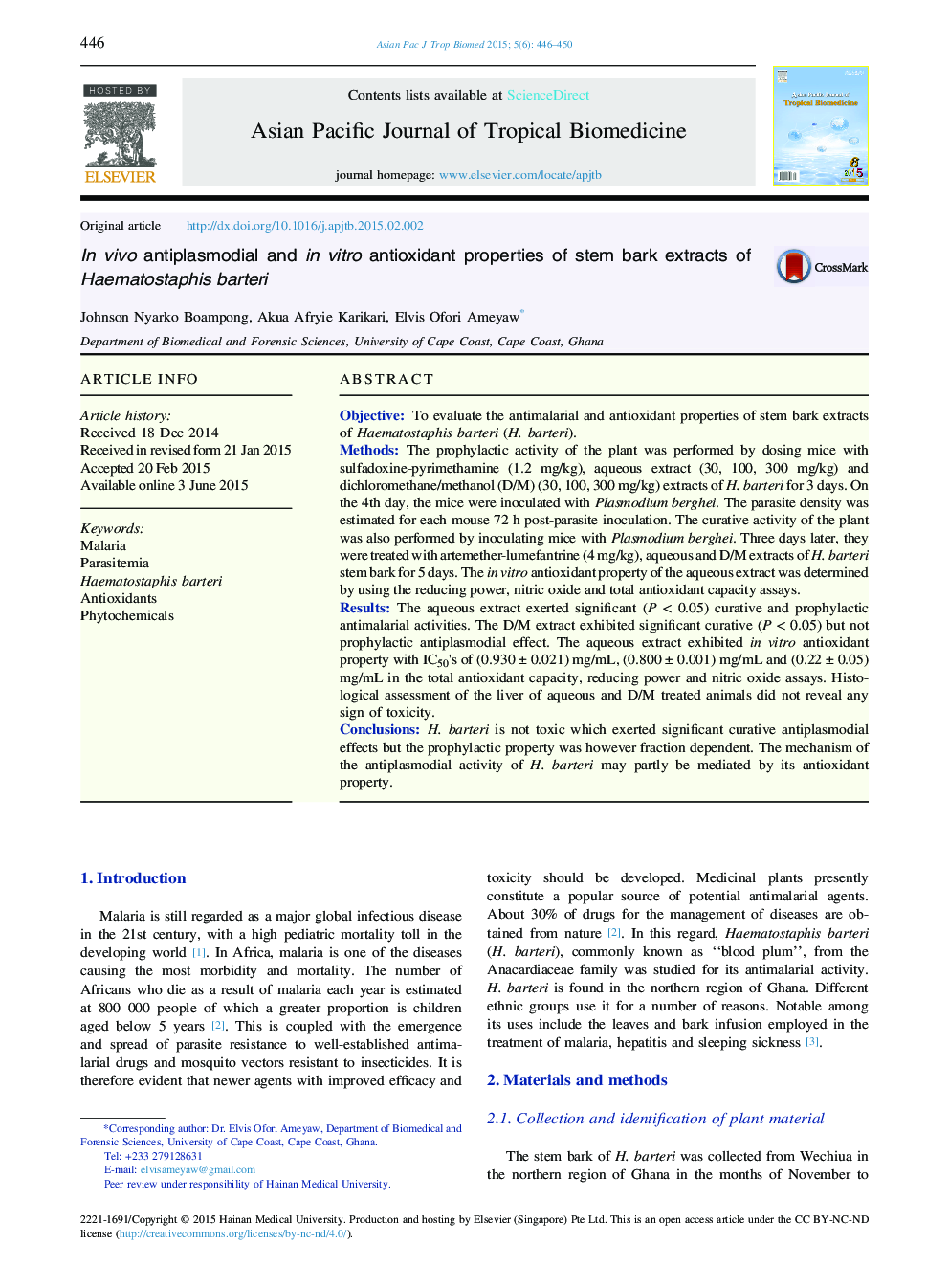| Article ID | Journal | Published Year | Pages | File Type |
|---|---|---|---|---|
| 2032713 | Asian Pacific Journal of Tropical Biomedicine | 2015 | 5 Pages |
ObjectiveTo evaluate the antimalarial and antioxidant properties of stem bark extracts of Haematostaphis barteri (H. barteri).MethodsThe prophylactic activity of the plant was performed by dosing mice with sulfadoxine-pyrimethamine (1.2 mg/kg), aqueous extract (30, 100, 300 mg/kg) and dichloromethane/methanol (D/M) (30, 100, 300 mg/kg) extracts of H. barteri for 3 days. On the 4th day, the mice were inoculated with Plasmodium berghei. The parasite density was estimated for each mouse 72 h post-parasite inoculation. The curative activity of the plant was also performed by inoculating mice with Plasmodium berghei. Three days later, they were treated with artemether-lumefantrine (4 mg/kg), aqueous and D/M extracts of H. barteri stem bark for 5 days. The in vitro antioxidant property of the aqueous extract was determined by using the reducing power, nitric oxide and total antioxidant capacity assays.ResultsThe aqueous extract exerted significant (P < 0.05) curative and prophylactic antimalarial activities. The D/M extract exhibited significant curative (P < 0.05) but not prophylactic antiplasmodial effect. The aqueous extract exhibited in vitro antioxidant property with IC50's of (0.930 ± 0.021) mg/mL, (0.800 ± 0.001) mg/mL and (0.22 ± 0.05) mg/mL in the total antioxidant capacity, reducing power and nitric oxide assays. Histological assessment of the liver of aqueous and D/M treated animals did not reveal any sign of toxicity.ConclusionsH. barteri is not toxic which exerted significant curative antiplasmodial effects but the prophylactic property was however fraction dependent. The mechanism of the antiplasmodial activity of H. barteri may partly be mediated by its antioxidant property.
